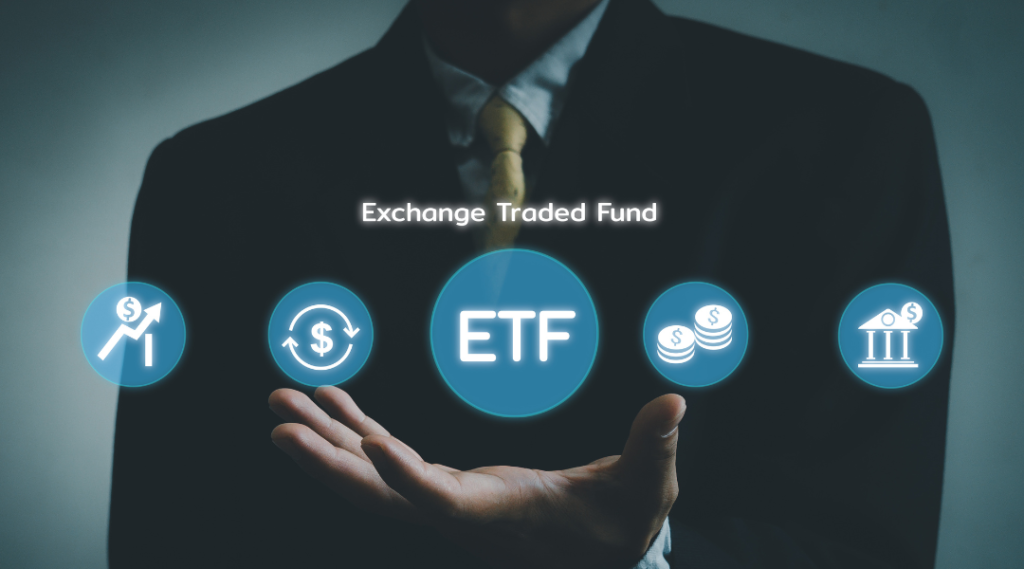
ETFs, or Exchange-Traded Funds, are investment products that have gained popularity in financial markets. They are a low-cost, diversified form of investment that offers investors the opportunity to gain exposure to a wide range of assets such as stocks, bonds, commodities and foreign currencies. In this article, we will explore in detail what ETFs are, how they work and what the benefits and risks associated with this type of investment are.
1. Introduction to ETFs
Definition of ETFs
An ETF, or Exchange-Traded Fund, is an exchange-traded investment fund that seeks to replicate the performance of a specific index or set of underlying assets. It is structured like a fund but can be traded like a stock, providing investors the flexibility to buy and sell their holdings throughout the day during market hours.
How ETFs are created
ETFs are created by financial institutions, known as “market makers.” These institutions purchase a basket of assets that represent the ETF’s benchmark index and deliver that basket to the ETF manager. In return, they receive ETF shares, which can be traded on the secondary market. In this way, ETFs are able to reflect the performance of the underlying index.
Structure of an ETF
An ETF is made up of a manager, who is responsible for managing the fund, and a custodian, who holds the underlying assets of the ETF. The manager is responsible for monitoring the performance of the index and making the necessary adjustments to the composition of the fund. The custodian is responsible for storing the physical assets that represent the index.
2. ETF Trading Mechanism
Secondary market trading
ETFs are traded on stock exchanges, just like shares. This means that investors can buy and sell ETF shares during market hours. Trading takes place on the secondary market, that is, investors buy and sell shares from other investors, not from the ETF manager.
ETF Price
The price of an ETF is determined by supply and demand in the secondary market. If there are more buyers than sellers, the price of the ETF tends to rise. If there are more sellers than buyers, the price of the ETF tends to fall. However, it is important to note that an ETF’s market price may not accurately reflect its net asset value (NAV), which is calculated daily based on the value of the underlying assets.
Liquidity and trading volume
ETFs generally have high liquidity due to their secondary market trading mechanism. This means that investors can buy or sell their ETF shares at any time during market hours. Additionally, ETFs also tend to have significant trading volume, which makes it easier to execute buy or sell orders.
3. Types of ETFs
There are different types of ETFs available on the market, each with specific characteristics and objectives. The main types of ETFs are:
Index ETFs
Index ETFs seek to replicate the performance of a specific market index, such as the Bovespa index in Brazil or the S&P 500 in the United States. They are designed to provide investors with diversified exposure to a particular market or sector, allowing them to invest in multiple companies in a single trade.
Sector ETFs
Sector ETFs focus on specific sectors of the economy, such as technology, health, energy, finance, among others. They allow investors to invest in a specific sector without needing to purchase individual shares of multiple companies in that sector.
Fixed Income ETFs
Fixed income ETFs invest in debt securities such as government bonds, corporate bonds and mortgage-backed securities. They are suitable for investors who want to gain exposure to the fixed income market and diversify their portfolio beyond stocks.
Commodity ETFs
Commodity ETFs invest in physical commodities such as gold, silver, oil, natural gas, among others. They allow investors to gain exposure to these assets without needing to physically purchase and store the commodities.
4. Advantages of ETFs
ETFs offer several advantages to investors, which contribute to their growing popularity. Some of the main advantages of ETFs include:
Diversification
ETFs allow investors to gain exposure to a broad set of assets in a single trade. This helps reduce the risk of a single investment as gains and losses are distributed among the various assets included in the ETF. Diversification is an important strategy for mitigating risk in an investment portfolio.
Low cost
ETFs generally have lower management fees compared to other investment funds. This is because they are designed to replicate the performance of a specific index and do not require intensive active management. Additionally, because ETFs are exchange-traded, investors can avoid entry and exit fees associated with other types of funds.
Access to specific markets
ETFs allow investors to access specific markets that may be difficult to reach otherwise. For example, an investor may want to gain exposure to the Chinese stock market, but investing directly in Chinese stocks can be complicated. In this case, the investor can opt for an ETF that tracks a Chinese stock index.
Transparency and liquidity
ETFs are transparent regarding their composition, as they generally disclose the list of assets that make up the fund daily. This allows investors to know exactly which assets are included in the ETF. Furthermore, ETFs generally have high liquidity due to their secondary market trading mechanism, which facilitates the purchase and sale of shares.
5. Risks of ETFs
Although ETFs offer several advantages, it is important to consider the risks associated with this type of investment. Some of the main risks of ETFs include:
Market risk
ETFs are subject to market risk, i.e. fluctuations in the prices of the underlying assets. If the market in which the ETF is exposed experiences significant declines, the value of the ETF may also decline.
Liquidity risk
Although ETFs are generally liquid, there may be times when liquidity is reduced. This can occur in volatile markets or when there is little demand for the ETF’s underlying assets. Low liquidity can make it difficult to buy or sell ETF shares at the desired price.
Counterparty risk
ETFs are structured in a way that seeks to replicate the performance of a specific index. However, in some cases, there may be a difference between ETF performance and index performance due to factors such as transaction costs, fund expenses and management strategies. This difference is known as “tracking error” and can affect the return on investment.
6. How to Invest in ETFs
Investing in ETFs is relatively simple and affordable. Here are the basic steps to get started:
- Open an account with a brokerage: To invest in ETFs, you must have an account with a stockbroker. Choose a reliable broker and check the requirements for opening an account.
- Choosing the right ETF: There are many ETFs available, each with its own characteristics and objectives. Research and review available ETFs to find one that suits your needs and investment goals.
- Monitor ETF performance: Once you have invested in an ETF, it is important to monitor its performance over time. Regularly check ETF reports and analysis to understand how it is performing against your investment objective.
7. Final Considerations
ETFs are a powerful tool for investors to diversify their portfolios and gain exposure to a wide range of assets. They offer several advantages, such as diversification, low cost and access to specific markets. However, it is important to be aware of the risks associated with ETFs and carry out adequate research before investing.
ETFs are a viable option for individual investors who want to enjoy the benefits of diversification and exposure to different asset classes. When investing in ETFs, remember to consider your risk profile, investment objectives and carefully analyze the performance of your chosen ETF.
Read too:
FAQ – Frequently Asked Questions
What does ETF mean?
A: ETF stands for Exchange-Traded Fund, which is an investment fund traded on an exchange.
What is the difference between an ETF and a mutual fund?
A: The main difference is that ETFs can be bought and sold throughout the day like stocks, while mutual funds are bought and sold only at the end of the day, after the net asset value has been calculated.
Do ETFs guarantee profits?
A: There is no guarantee of profit on any investment, including ETFs. An ETF’s performance is subject to market fluctuations and may result in losses.
What is the management fee for an ETF?
A: Management fees for ETFs can vary, but are generally lower compared to other investment funds.
Are ETFs suitable for beginner investors?
A: ETFs can be suitable for beginning investors as they offer diversification and access to different markets at a low cost. However, it is important to do adequate research and understand the risks before investing.
Where can I find the complete list of ETFs listed on the Stock Exchange?
A: To access the complete list of Exchange-Traded Funds (ETFs) listed on the Stock Exchange (B3), you can visit the official B3 website and find the section dedicated to traded products. There, you will find an updated list of all ETFs available for investment. To access the list, click here.





